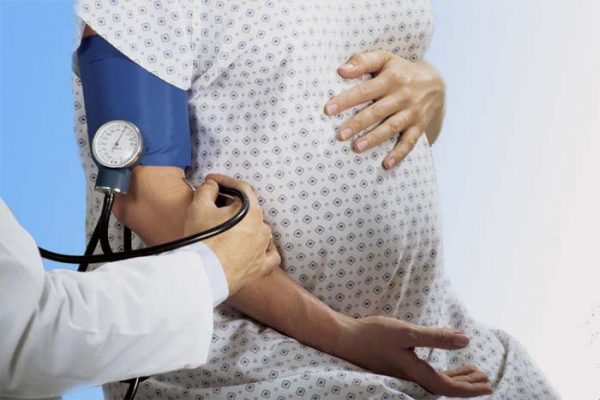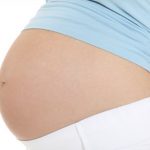Pre-eclampsia signs and diagnosis
Late toxemia, preeclampsia or gestosis is a pregnancy complication, leading to the breakdown of the vital systems. It begins in the second half of pregnancy and progresses until delivery. Sometimes preeclampsia is also defined as a severe form of late toxemia or gestosis.

Causes of Preeclampsia.
10% of pregnant women suffer from preeclampsia. Despite years of research, the exact cause of this pathology is still unknown. According to some researchers, preeclampsia develops due to violations of hormonal regulation in vital organs. According to another version, preeclampsia occurs because of immunological incompatibility between the fetus and the mother.
Some risk groups have been established. They include women:
- with placental abnormalities;
- who had preeclampsia in previous pregnancies;
- primipara;
- with a multiple pregnancy;
- younger than 20 / older than 35;
- obese;
- suffering from hypertension, kidney disease, etc.
In recent years, the frequency of this complication of pregnancy is growing. Most obstetrician-gynecologists attribute this fact to the increasing number of late deliveries (after 35 years). Unfortunately, by this age, most women already have multiple chronic diseases, which significantly complicate the course of pregnancy.
The main diseases causing the development of late toxicosis include:
- high blood pressure,
- obesity,
- chronic pyelonephritis,
- diabetes,
- heart diseases,
- dystonia.
Symptoms of Preeclampsia.
The signs of preeclampsia are numerous and diverse. An expectant mother may notice the first symptoms in the 28th-29th weeks or later. They are:
- Swelling of feet, hands or face.
It is the most evident manifestation of preeclampsia. In order to determine whether there is swelling or not, you should carefully monitor your weight gain. If your weight gain is more than 500 g per week, it can be evidence of fluid retention in the body, which is a sign of swelling.
- Nephropathy.
Nephropathy is a more severe manifestation of preeclampsia. It is damage to parenchymal and glomerular apparatus of the kidneys, which is characterized by edema, increased blood pressure and proteinuria (protein in the urine). How to notice nephropathy? The main sign is a decrease in the urine amount. You should pay attention to this dangerous sign.
- Nervous system disruption
The development of pre-eclampsia causes lesions of the nervous system: headaches, visual disturbances — flashing in front of the eyes, nausea, vomiting.
If not to stop this process, pre-eclampsia develops into eclampsia — seizures and convulsions with loss of consciousness, lasting 1−2 minutes. Eclampsia can lead to a fatal outcome.
Diagnosis of Preeclampsia.
In order to diagnose preeclampsia you will need:
- clinical and biochemical blood test;
- urinalysis;
- Doppler ultrasound of the fetus;
- CTG (cardiotocography) of the fetus;
- to measure your blood pressure.
If these analyses and data indicate possible preeclampsia (BP above 135/85, pronounced swelling and a large weight gain, protein in the urine (Proteinuria ≥ 0.3 grams)), you’ll also need:
- daily monitoring of blood pressure,
- ECG;
- daily urinalysis;
- consultations with an ophthalmologist, physician, nephrologist, neurologist.
Treatment of preeclampsia.
Late toxemia with milder manifestations is treated on an outpatient basis. If there are severe manifestations and nephropathy, women need hospitalization.
| Women with minor swelling need to change their lifestyle and nutrition. |
If a woman has pronounced swelling, the doctor will prescribe:
— sedatives;
— drugs to improve the rheological properties of blood;
— antioxidants (vitamin A and E);
— antihypertensives with antispasmodic effect;
— herbs with diuretic effect.
Severe nephropathy, preeclampsia and eclampsia treatment is carried out with the participation of an intensivist in an ICU. The treatment includes infusion therapy for correction of metabolic and electrolyte disturbances with the use of fresh frozen plasma. In order to prevent premature birth and fetal hypoxia doctors prescribe selective sympathomimetics. Preeclampsia treatment is carried out not only before, but also during childbirth and in the postpartum period.
Preeclampsia and childbirth.
If, according to the ultrasound and CTG data, the health status of the pregnant woman is satisfactory and the fetus is not suffering, natural childbirth is possible. In severe forms of preeclampsia and chronic hypoxia, caesarean section is required.
Nutrition and diet for women with pre-eclampsia.
Lifestyle and diet are very important for successful treatment of preeclampsia. If there is swelling and abnormal weight gain, pregnant women should stick to special diets. You must exclude spicy, salty and fried foods from your diet. Consume less salt. Give preference to boiled dishes. Try to consume foods of only plant and animal origin: meat, dairy products, fruit and vegetables. On average, you should have about 2500 calories a day.
Limit your consumption of food and liquids. Drink no more than one and a half liters of fluid a day. Pay attention to urine output — urine amount should be equal to drunk.
Hectic lifestyle and constant stress also trigger preeclampsia. In the second half of pregnancy, a woman should sleep at least 8−9 hours per day. When you want to sleep during the day, it is better to lie down and have a sleep. However, sedentary lifestyle can also cause preeclampsia. Therefore, a woman needs daily walks in the fresh air for at least an hour. Special fitness for pregnant women can also help.
Complications of preeclampsia:
- premature birth;
- detachment of normally located placenta, resulting in fetal death;
- hypoxia, which also leads to intrauterine fetal death;
- hemorrhage and detachment of the retina;
- heart failure, pulmonary edema, brain edema, heart attacks and strokes;
- development of renal-hepatic failure, hepatic coma.
- eclampsia;
- HELLP Syndrome.
Prevention of preeclampsia:
— implementation of reproductive function up to 35 years;
— timely treatment of chronic diseases;
— healthy lifestyle.




